New Marquette Law School Poll shows Clinton leading Trump among likely voters
MILWAUKEE -- A new Marquette University Law School poll released on Wednesday afternoon, September 21st finds Hillary Clinton leading Donald Trump among likely voters in Wisconsin 44 percent to 42 percent.
The latest poll was conducted by phone Sept. 15 through Sunday, sampling 802 registered Wisconsin voters with a margin of error of 4.8 percent.
Among all registered voters in the new poll, Clinton is supported by 43 percent and Trump by 38 percent, with 15 percent not expressing a preference.
In the most recent Marquette Law School Poll, conducted Aug. 25-28, Clinton was supported by 45 percent and Trump by 42 percent among likely voters, with 10 percent not having a preference.
Among registered voters in that poll, Clinton held 42 percent to Trump’s 37 percent, with 19 percent lacking a preference.
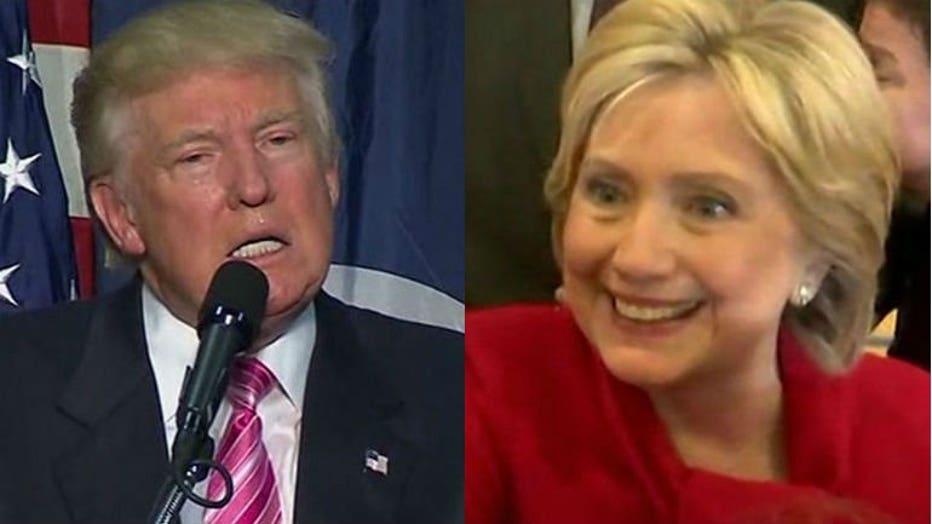
Donald Trump/Hillary Clinton
In a four-candidate race, among likely voters, it’s Clinton 41 percent, Trump 38 percent , Libertarian Gary Johnson 11 percent, and Green Party’s Jill Stein at 2 percent. Even with four-candidate field, 7 percent do not give a preference.
Among all registered voters, in a four-way race, it’s Clinton 39 percent, Trump 35 percent, Johnson 12 percent and Stein 3 percent.
Wisconsin may be a battleground state, if the polls are to be believed, but Hillary Clinton and Donald Trump aren't treating it like one. Both Clinton and Trump are focusing their time and money elsewhere with the election less than seven weeks away.
Trump has not campaigned in Wisconsin in over a month and Clinton has not been to the state since the April primary. Neither side is spending money on campaign ads in Wisconsin yet.
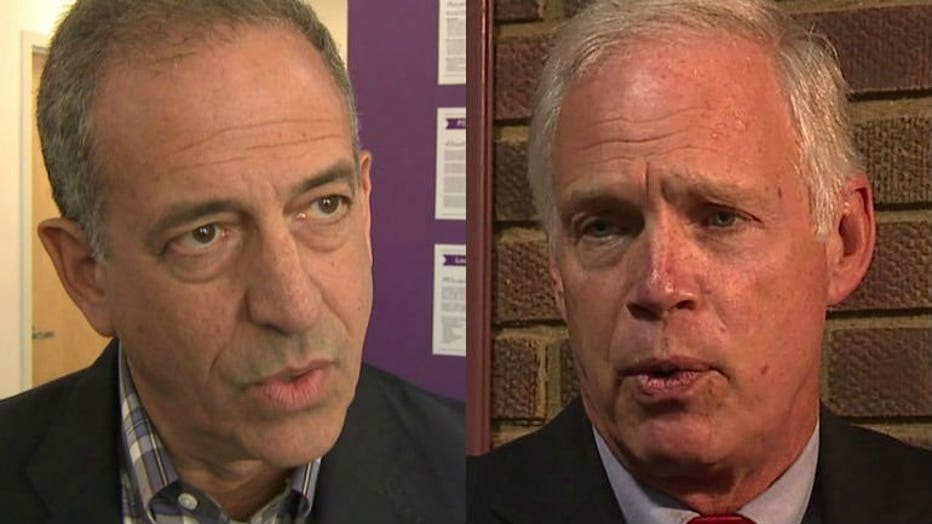
Russ Feingold, Ron Johnson
Meanwhile, Senator Ron Johnson on Wednesday released a new ad on the same day this poll was released. The poll shows Johnson trailing Democrat Russ Feingold by 6 points.
Among registered voters, Feingold had 46 percent support compared with 40 percent for Johnson. Among likely voters, Feingold had 47 percent compared with 41 percent for Johnson.
Johnson's ad focuses on his faith-based initiative to help people find jobs in Milwaukee's inner city. It features Johnson, participants in the Joseph Project and Pastor Jerome Smith of the Greater Praise Church of God in Christ in Milwaukee.
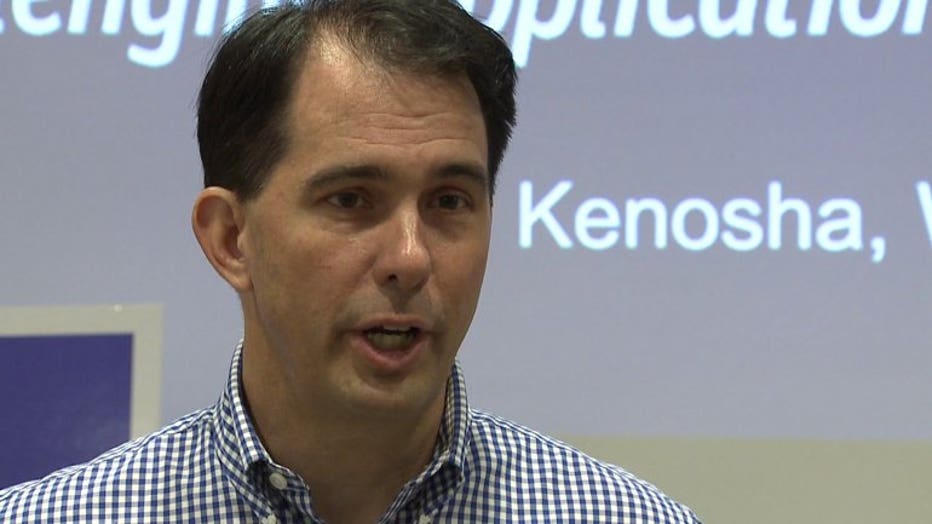
Gov. Scott Walker
Gov. Scott Walker's approval rating is at 43 percent, one year after he dropped his ill-fated run for president.
The poll shows Walker's approval is unchanged from three weeks ago. It was 38 percent six weeks ago.
By comparison, President Barack Obama's approval rating in Wisconsin was 54 percent and Republican House Speaker Paul Ryan's was 47 percent.
Walker's approval rating has been around 40 percent for more than a year. It dropped to its lowest levels as Walker launched his failed presidential bid and it has not recovered.
Below is a complete analysis of the latest MU Law School poll, as released by poll officials:
A new Marquette Law School Poll finds 44 percent of Wisconsin likely voters supporting Democratic candidate Hillary Clinton for president and 42 percent supporting Republican Donald Trump in a head-to-head matchup. Twelve percent do not express a preference, saying they will vote for neither candidate, will not vote, or don’t know how they will vote.
Among all registered voters in the new poll, Clinton is supported by 43 percent and Trump by 38 percent, with 15 percent not expressing a preference.
In the most recent Marquette Law School Poll, conducted Aug. 25-28, Clinton was supported by 45 percent and Trump by 42 percent among likely voters, with 10 percent not having a preference. Among registered voters in that poll, Clinton held 42 percent to Trump’s 37 percent, with 19 percent lacking a preference.
In a four-way matchup including Clinton, Trump, Libertarian candidate Gary Johnson and Green Party candidate Jill Stein, Clinton is supported by 41 percent of likely voters in the new poll, with Trump at 38 percent, Johnson at 11 and Stein at 2. A total of 7 percent in that matchup do not give a preference. Among all registered voters, Clinton receives 39 percent, Trump 35 percent, Johnson 12 percent and Stein 3 percent, with 10 percent lacking a preference.
In the previous four-candidate matchup Aug. 25-28, Clinton received 41 percent among likely voters, with Trump at 38 percent, Johnson at 10 and Stein at 4, while another 7 percent did not pick a candidate. Among registered voters in the previous poll, Clinton received 37 percent, Trump 32, Johnson 11 and Stein 7, with 13 percent expressing no preference.
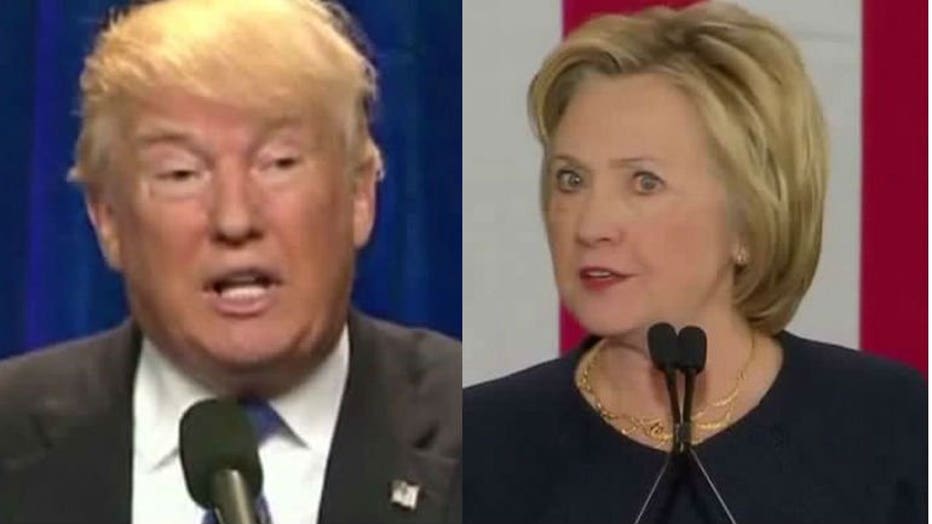
Donald Trump and Hillary Clinton
In a head-to-head matchup for Wisconsin’s U.S. Senate race, among likely voters, 47 percent support Democrat Russ Feingold and 41 percent support Republican Ron Johnson, with 8 percent lacking a preference. Among all registered voters, Feingold receives 46 percent, Johnson 40 percent and 11 percent lack a preference.
In late August, Feingold had 48 percent and Johnson had 45 percent among likely voters. Among all registered voters in that poll, Feingold had 46 percent support and Johnson 42 percent.
When Libertarian candidate Phil Anderson is included in the Senate contest, Feingold receives 44 percent among likely voters in the new poll, Johnson 39 percent and Anderson 7 percent, with 10 percent not expressing a preference. Among all registered voters, Feingold is supported by 44 percent, Johnson 37 percent and Anderson 8 percent, with 10 percent not holding a preference.
In late August, among likely voters, Feingold held 45 percent, Johnson 42 percent and Anderson 6 percent. Among all registered voters in the previous poll, Feingold received 42 percent, Johnson 38 percent and Anderson 8 percent.
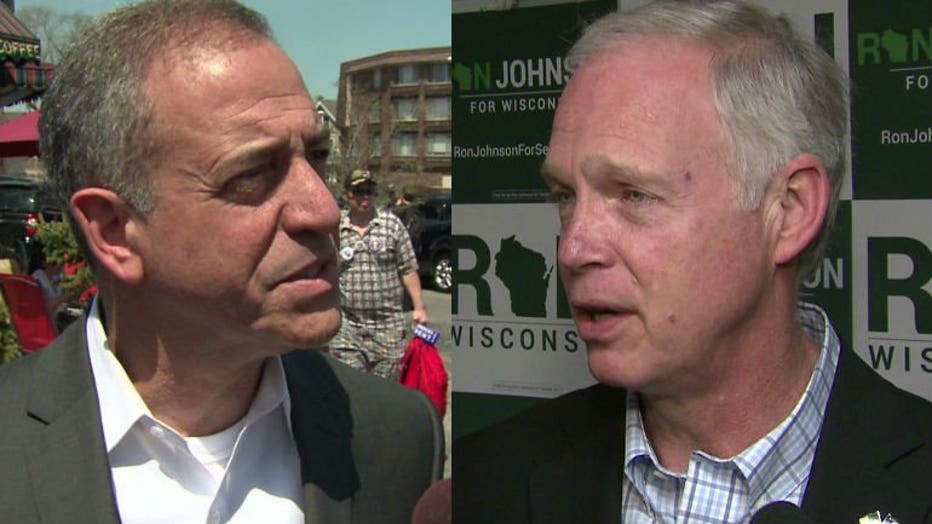
The new poll was conducted Sept. 15-18, 2016. The full sample includes 802 registered voters interviewed by cell phone or landline, with a margin of error of +/- 4.4 percentage points. Results for likely voters are based on 677 respondents, with a margin of error of +/- 4.8 percentage points.
Views of Senate candidates
Among all registered voters, 34 percent have a favorable view of Johnson, 36 percent hold an unfavorable view and 30 percent say they haven’t heard enough or don’t know how they view him. Feingold is viewed favorably by 46 percent, unfavorably by 29 percent and 25 percent say they lack an opinion of him. Favorability to Anderson was not asked in this poll. In the Aug. 25‑28 poll, Anderson was viewed favorably by 4 percent, unfavorably by 4 percent and 92 percent lacked an opinion of him.
Thirty-six percent describe Johnson as someone who “cares about people like me,” while 43 percent say this did not describe him and 20 percent say they do not know. Fifty percent describe Feingold as caring about people like them while 32 percent do not and 18 percent say they don’t know.
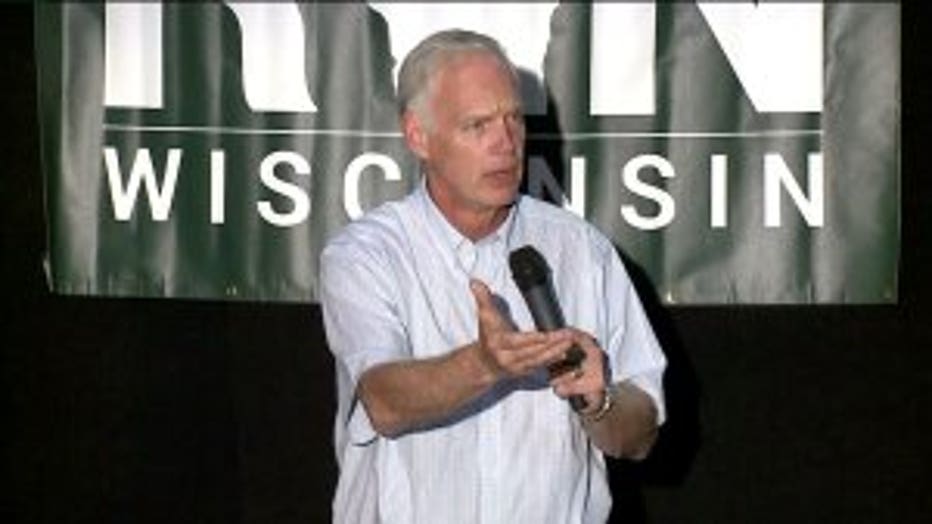
Senator Ron Johnson
Asked how effective Johnson, who was elected in 2010, is as a senator, 13 percent say very effective, 36 percent somewhat effective, 16 percent not very effective and 17 percent not at all effective. Sixteen percent say they don’t know how effective he is. Twenty-two percent say Feingold, who was in the Senate from 1993 to 2011, was very effective as a senator, 37 percent somewhat effective, 16 percent not very effective and 12 percent not at all effective, with 13 percent lacking an opinion.
Among all registered voters, Johnson is supported by 80 percent of Republicans in a head-to-head matchup against Feingold, who receives 84 percent support from Democrats. Ten percent of Republicans cross over to vote for Feingold, while 6 percent of Democrats support Johnson. Independents divide 43 percent for Feingold and 36 percent for Johnson.
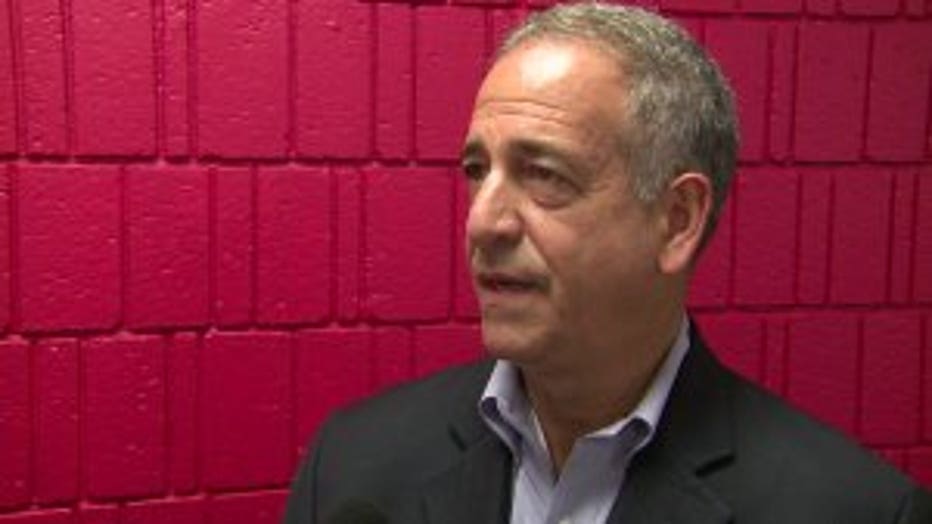
Russ Feingold
When Libertarian candidate Anderson is added to the choices among registered voters, Johnson holds 76 percent of Republicans, with 9 percent crossing over to Feingold and 6 percent to Anderson. Feingold wins 82 percent of Democrats, while 6 percent cross over to Johnson and 3 percent support Anderson. Independents give Feingold 40 percent, Johnson 32 percent and Anderson 15 percent.
Among likely voters in the head-to-head matchup, Johnson holds 80 percent of Republicans, with 9 percent supporting Feingold. Feingold wins 85 percent of Democrats, with 5 percent going to Johnson. Independents divide 47 percent for Feingold and 42 percent for Johnson.
In the three-way Senate matchup among likely voters, Republicans give Johnson 78 percent support, 7 percent choose Feingold and 5 percent vote for Anderson. Among Democrats, 83 percent back Feingold, 6 percent Johnson and 2 percent Anderson. Independents divide 40 percent for Feingold, 35 percent for Johnson and 15 percent for Anderson.
Discontent with the presidential nominees
Unhappiness with their presidential nominee is prevalent among registered voters in both parties. Among Republicans and independents who lean Republican, 68 percent say they would have liked their party to nominate someone other than Trump, while 29 percent say they prefer Trump as the nominee. Among Democrats and independents who lean Democratic, 48 percent would prefer Bernie Sanders as the nominee while 43 percent prefer Clinton.
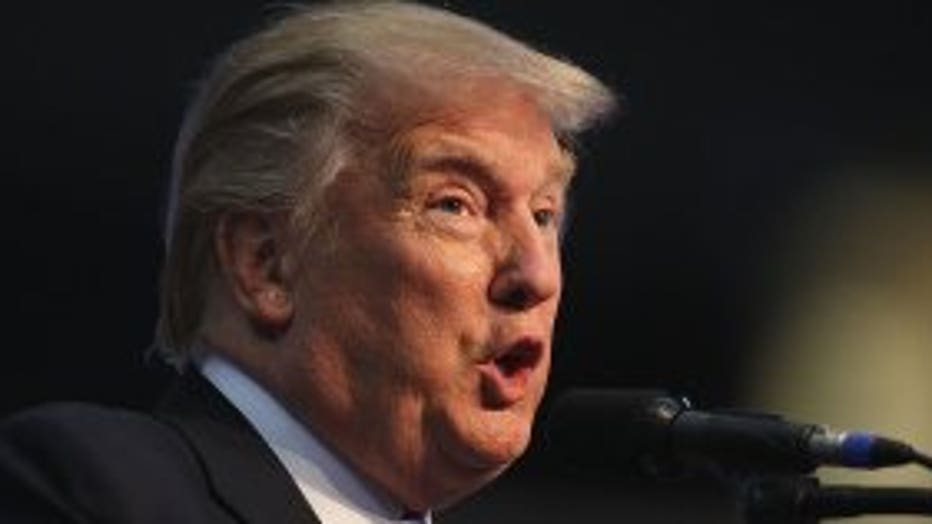
Even with a high percentage of voters preferring a different nominee, sixty-one percent of Republicans and independents who lean Republican hold a favorable view of Trump, with 28 percent unfavorable. Among Democrats and independents who lean Democratic, 78 percent have a favorable view of Clinton, with 15 percent unfavorable.
Among registered voters who say they are Republicans or independents who lean Republican, and who wish the party had a different nominee, Trump receives 65 percent of the vote, with 10 percent supporting Clinton and 22 percent lacking a preference in the head-to-head matchup. Among Republicans and Republican leaners who like Trump as the nominee, he receives 96 percent of the vote, with 1 percent for Clinton and 1 percent undecided.
For those Democrats and independents leaning Democratic who wish Sanders were the nominee, Clinton receives 72 percent of the vote, with 11 percent going to Trump and 9 percent lacking a preference. Among those who like to see Clinton as the nominee, she receives 94 percent, with Trump getting 2 percent and 3 percent lacking a preference.
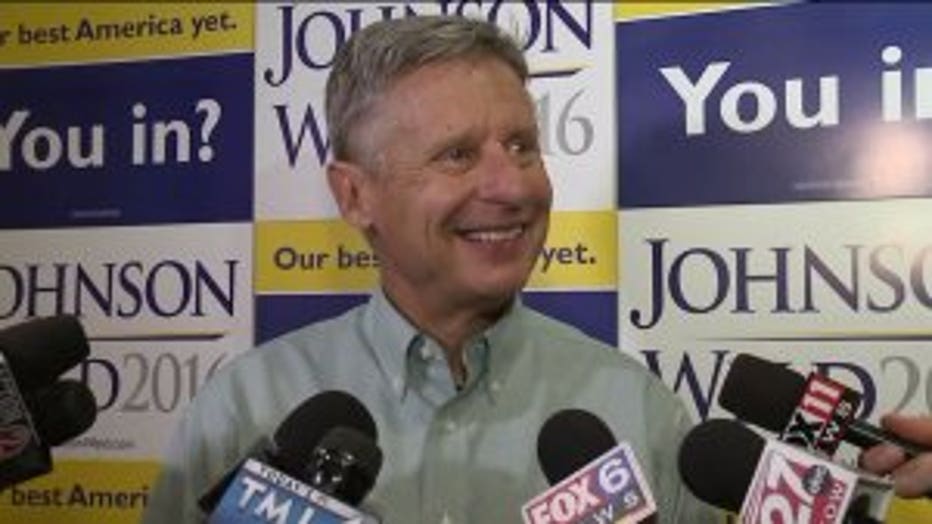
Gary Johnson at Serb Hall
When Libertarian candidate Johnson and Green party candidate Stein are added to the list of candidates, Trump receives 60 percent among those Republicans and leaners who would have preferred some other nominee, Clinton 9 percent, Johnson 17 percent and Stein 2 percent. Among those who like Trump as the nominee, he receives 90 percent to less than a half percent for Clinton, 8 percent for Johnson and 1 percent for Stein.
Among Democrats and those leaning Democratic who would have preferred Sanders as the nominee, Clinton holds 55 percent to Trump’s 9 percent, Johnson’s 15 percent and Stein’s 9 percent. Among those who like her nomination, Clinton wins 93 percent, Trump 2 percent, Johnson 2 percent and Stein zero percent.
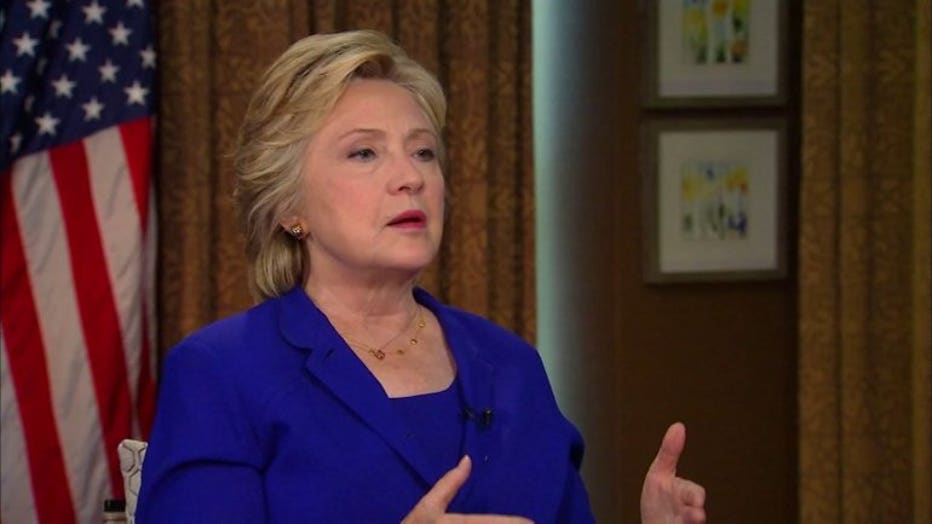
Hillary Clinton
Unified or divided government and ticket splitting
Fifty-three percent of registered voters say they prefer that Congress and the president be of the same party in order to get things done, while 39 percent prefer different parties because they can balance each other. Sixty-one percent of both Republicans and Democrats prefer one-party control, with 34 percent of Republicans and 33 percent of Democrats preferring divided government. Independents prefer divided government by a 48 percent to 43 percent margin over unified control.
Despite a majority preference for unified government, 51 percent of registered voters say they typically split their votes between parties, with 45 percent voting a straight ticket. Sixty-four percent of Democrats vote a straight ticket, as do 54 percent of Republicans, but just 21 percent of independents. Thirty-three percent of Democrats, 43 percent of Republicans and 75 percent of independents say they vote a split ticket.
Sixty-seven percent of straight-ticket voters prefer unified party control of Congress and the presidency, with 29 percent preferring divided control. Among ticket-splitters, 43 percent prefer unified control and 48 percent prefer divided government.
Vote fraud and voter disenfranchisement
Vote fraud and voter disenfranchisement have been important issues in policymaking and legal challenges over the past several years. Respondents were asked how many illegally cast votes by people not legally eligible they expected in November’s election and how many legal voters might be prevented from voting because of lack of proper identification. Respondents were offered a wide range of options for each item.
| Answer option | Illegally cast votes | Legal voters prevented from voting |
| Less than 10 people | 27% | 15% |
| 10-100 | 18% | 15% |
| 100-1,000 | 18% | 23% |
| 1,000-10,000 | 14% | 17% |
| 10,000-100,000 | 6% | 12% |
| More than 100,000 | 3% | 5% |
| Don’t know | 12% | 11% |
Comparing each individual’s responses to the two items: 18 percent think more illegal votes are cast than legal votes are prevented, 26 percent think the two are equal and 37 percent think more legal votes are prevented than illegal votes cast. Nineteen percent don’t know on either or both questions.
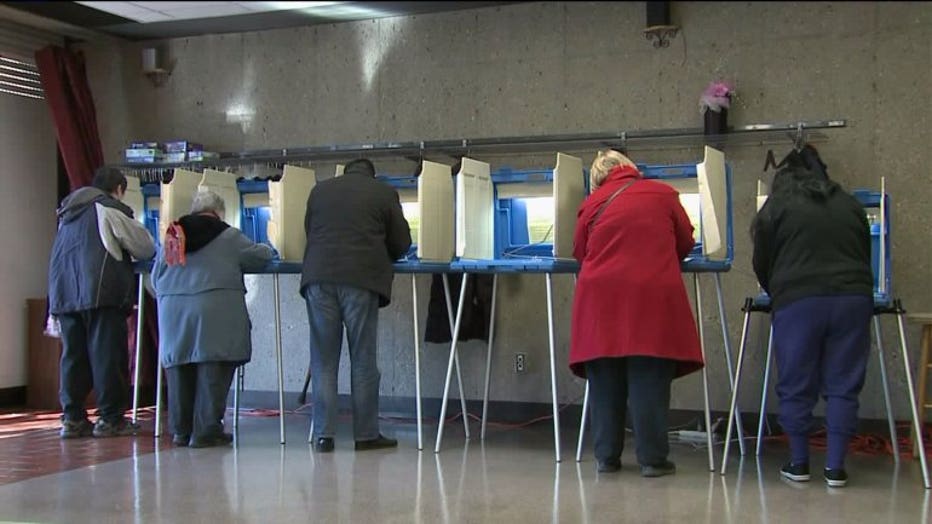
Voting in Milwaukee
Among Republicans, 27 percent think there are more illegal votes than legal voters prevented from voting, 30 percent think the two are equal and 24 percent think more legal voters are prevented from voting. Among Democrats, 7 percent think there are more illegal votes, 23 percent think the two are equal and 55 percent say there are more legal voters who are prevented from voting. Twenty-one percent of independents think there are more illegal votes, 26 percent think they are equal and 36 percent think more legal voters are denied their ability to vote.
International issues
The approach the United States should take toward the Islamic State (also known as ISIS) has emerged as an issue in the presidential campaign. Thirty percent of registered voters favor limiting military action against ISIS to air strikes alone, 42 percent support committing combat troops on the ground as well, while 15 percent oppose any military action and 11 percent don’t have an opinion.
Among Trump voters, 61 percent favor committing both air and ground forces, 20 percent prefer air only and 9 percent oppose any military action. Among Clinton supporters, 27 percent favor both air and ground commitments, 40 percent favor air only and 18 percent oppose any military action.
Among those who have served, or who have a close family member who has served, in the armed forces since 2001, 46 percent support both air and ground action, 26 percent support air action only and 14 percent oppose any military action. Among those who have not served nor have any family who has served in the armed forces, 39 percent favor air and ground action, 33 percent support air action only and 15 percent oppose any military action.
While 72 percent support some form of military action against ISIS, a majority, 57 percent, say the war in Iraq was not worth the cost, while 37 percent say it was worth fighting. Views of those who served or who had family who served differ little from those who did not, with 55 percent of those who served (or who had family who served) saying the Iraq war was not worth the cost and 40 percent saying it was worth it, while among those who did not serve 58 percent say it was not worth it and 35 percent saying it was.

ISIS in Syria
Among Trump voters, 50 percent say the Iraq war was worth fighting, while 45 percent say it was not. Among Clinton voters, 24 percent say it was worth fighting and 70 percent say it was not.
Views of military action against ISIS also reflect views of the Iraq war. Among those saying the Iraq war was worth fighting, 64 percent support committing both air and ground forces against ISIS, 23 percent support an air campaign only and 4 percent oppose any military action. Among those who think the Iraq war was not worth fighting, 28 percent support air and ground action, 37 percent support air action only and 23 percent oppose any military action.
Asked which is the best way to reduce international threats to the United States, 58 percent say diplomatic negotiations are best, while 24 percent say the use of military force is best, with 12 percent saying both.
Among Trump supporters, 43 percent say military force is the best way to reduce international threats, 36 percent choose diplomatic negotiations and 16 percent say both. Among Clinton voters, 79 percent favor diplomatic negotiations, 8 percent say use of force is best and 7 percent say both.
Views of presidential candidates
Trump is viewed favorably by 31 percent and unfavorably by 61 percent of registered voters. Seven percent say they either haven’t heard enough or don’t know how they feel about him. In late August, Trump’s rating was 28 percent favorable and 63 percent unfavorable.
Clinton is viewed favorably by 43 percent and unfavorably by 50 percent of registered voters. Six percent say they haven’t heard enough or don’t know how they feel about her. In late August, 35 percent rated Clinton favorably and 58 percent unfavorably.
Johnson, the Libertarian presidential candidate, is seen favorably by 17 percent of registered voters and unfavorably by 21 percent, with 62 percent lacking an opinion of him. Three weeks ago, 14 percent had a favorable view of Johnson, 14 percent an unfavorable view and 72 percent lacked an opinion.
Stein, the Green Party candidate, is viewed favorably by 8 percent and unfavorably by 12, with 79 percent saying they haven’t heard enough or don’t know how they feel about her. This is the first time the Marquette Law School Poll has measured feeling toward Stein.
Comparison of candidate traits
Asked if “honest” describes Clinton, 31 percent of registered voters say it does while 63 percent say it does not. For Trump, 34 percent say “honest” describes him while 63 percent say it does not. In late August, 26 percent described Clinton as honest and 68 percent did not. Thirty-one percent described Trump as honest in that poll, while 64 percent did not.
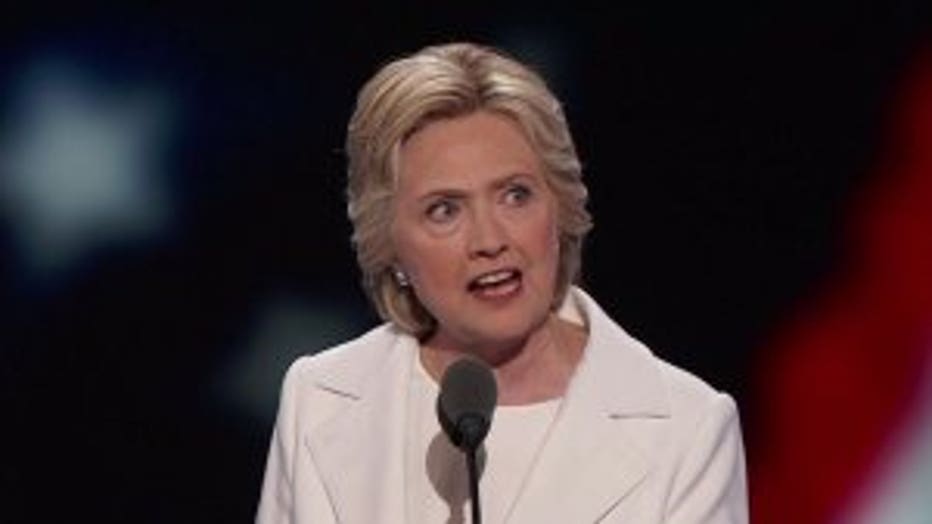
Hillary Clinton
Forty-six percent describe Clinton as someone who “cares about people like me” and 51 percent do not. Thirty-four percent say Trump cares about people like them while 63 percent do not see him this way. In late August, 40 percent described Clinton as caring while 54 percent did not. In that poll, 31 percent said Trump cares while 65 percent did not see him that way.
Asked if a candidate has the qualifications to be president, 60 percent say Clinton does, while 38 percent say she does not. Thirty-five percent say Trump has the qualifications to be president, while 62 percent say he does not. In late August, 54 percent described Clinton as qualified and 44 percent said she was not, while 32 percent described Trump as qualified and 65 percent said he was not.
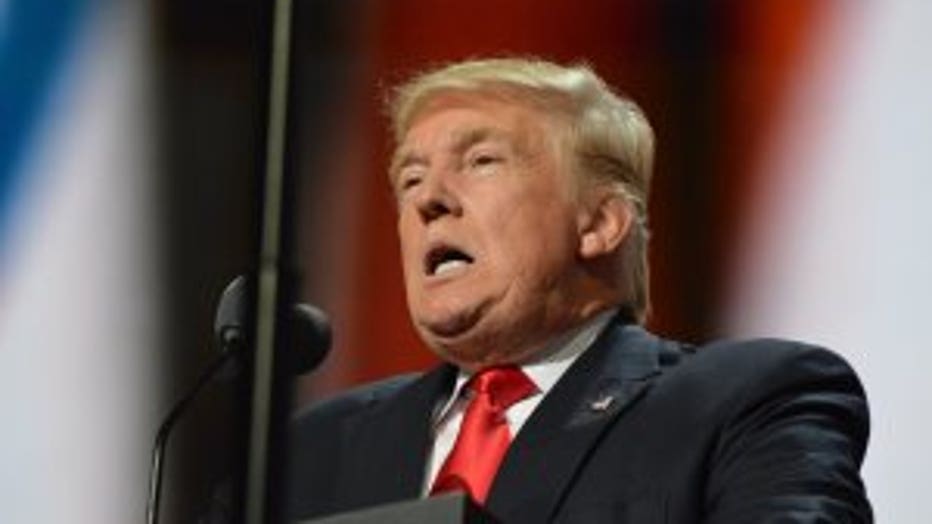
Donald Trump speaks after he accepted the nomination for president of the United States at the Republican National Convention in Cleveland, Ohio on Thursday, July 21, 2016.
Respondents were asked how comfortable they were with the idea of each candidate as president. Forty-six percent say they are very or somewhat comfortable with Clinton as president, with 54 percent very or somewhat uncomfortable, including 42 percent saying they are “very uncomfortable.” For Trump, 33 percent say they are very or somewhat comfortable with him as president, while 65 percent say they are very or somewhat uncomfortable, including 51 percent saying “very uncomfortable.”
In late August, 41 percent were comfortable with Clinton and 57 percent were uncomfortable, with 45 percent very uncomfortable. For Trump, 32 percent were comfortable and 67 percent uncomfortable, with 52 percent very uncomfortable.
Minimum wage increase
Asked if they favor or oppose increasing the minimum wage from $7.25 to $15 per hour, 51 percent favor the increase while 47 percent oppose it.
Seventy-five percent of Republicans oppose this increase in the minimum wage while 23 percent support the hike. Seventy-six percent of Democrats favor the increase while 23 percent oppose it. Among independents, 53 percent support and 44 percent oppose the increase.
Opinions of major political leaders
Approval of how Wisconsin Gov. Scott Walker is handling his job stands at 43 percent, with disapproval at 52 percent. In late August, approval was 43 percent and disapproval was 49 percent.
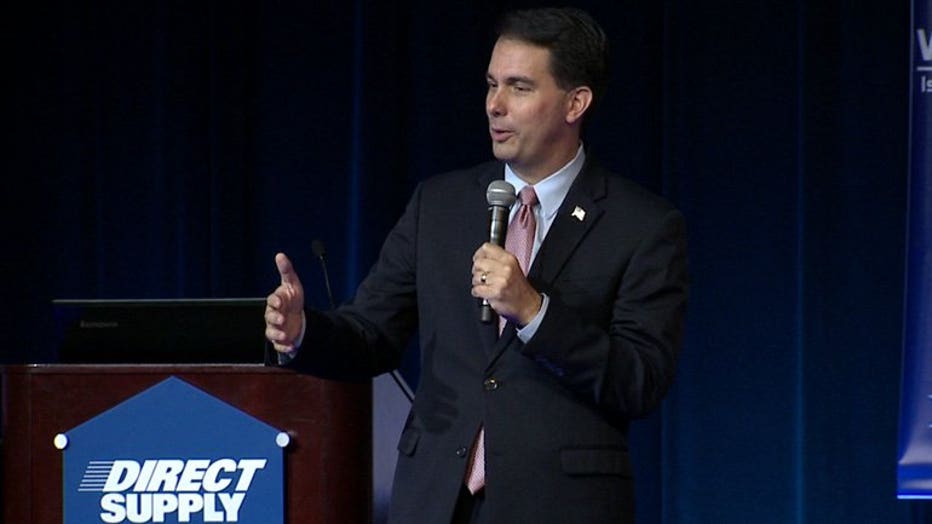
Gov. Scott Walker at Direct Supply
President Obama’s job approval stands at 54 percent, with 41 percent disapproval. In early August, 49 percent approved and 45 percent disapproved.
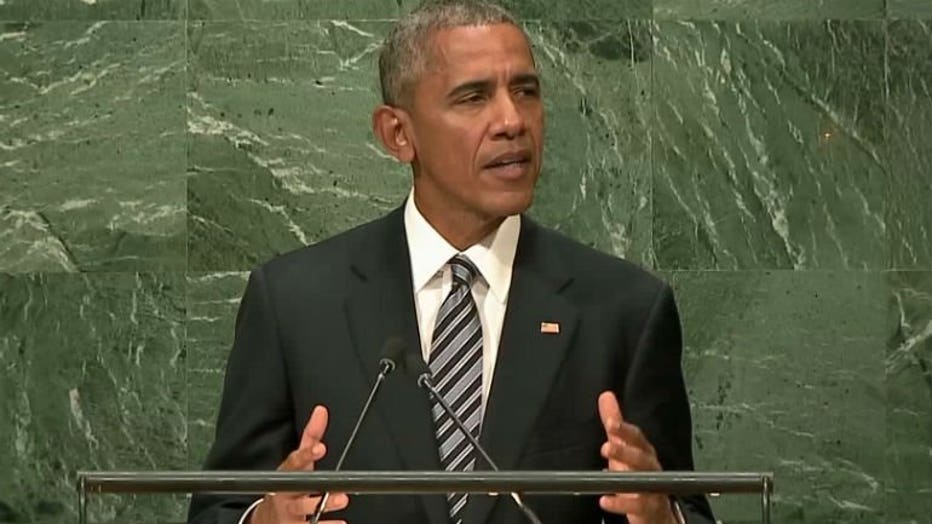
President Obama at UN
U.S. Sen. Tammy Baldwin receives a 38 percent favorable rating and a 32 percent unfavorable rating, with 30 percent saying they haven’t heard enough or don’t have an opinion. When last measured in June of this year, 37 percent were favorable, 33 percent unfavorable and 31 percent lacked an opinion.
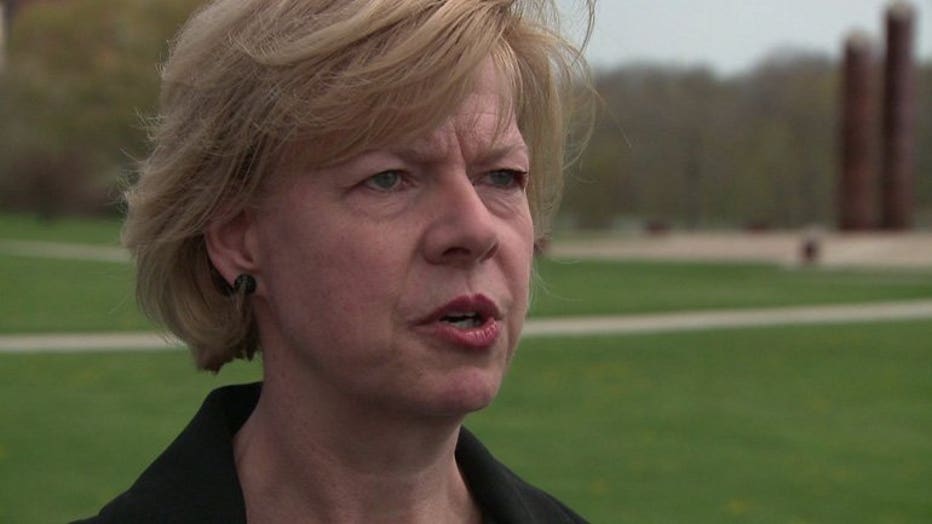
Sen. Tammy Baldwin
U.S. Rep. Paul Ryan receives a 47 percent favorable rating and a 32 percent unfavorable rating, with 21 percent unable to provide a rating. When last measured Aug. 4-7, 2016, his favorable rating was 54 percent, unfavorable 33, and 18 percent were unable to rate him.
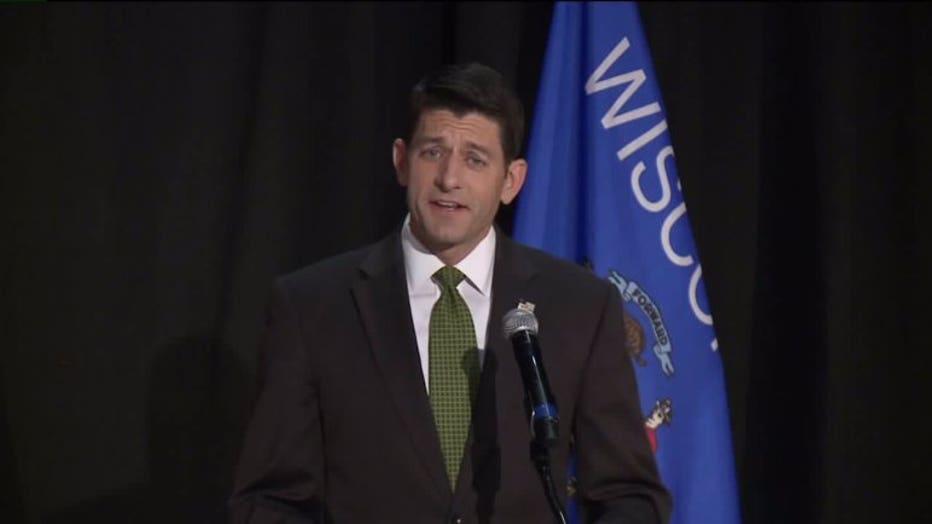
Paul Ryan
About the Marquette Law School Poll
The Marquette Law School Poll is the most extensive statewide polling project in Wisconsin history. This poll interviewed 802 registered Wisconsin voters by landline or cell phone, September 15-18, 2016. The margin of error is +/- 4.4 percentage points for the full sample. For likely voters, the unweighted sample size is 677 and weighted sample size is 642, with a margin of error of +/-4.8 percentage points.
The partisan makeup of the full registered-voter sample, including those who lean to a party, is 45 percent Republican, 47 percent Democratic and 7 percent independent. The long-term estimate over the previous 38 statewide Marquette polls, with 32,949 respondents, is 42 percent Republican and 48 percent Democratic, with 9 percent independent. The partisan makeup of this sample, excluding those who lean to a party, is 31 percent Republican, 31 percent Democratic and 34 percent independent, compared to the long-term estimate of 27 percent Republican, 31 percent Democratic and 38 percent independent.
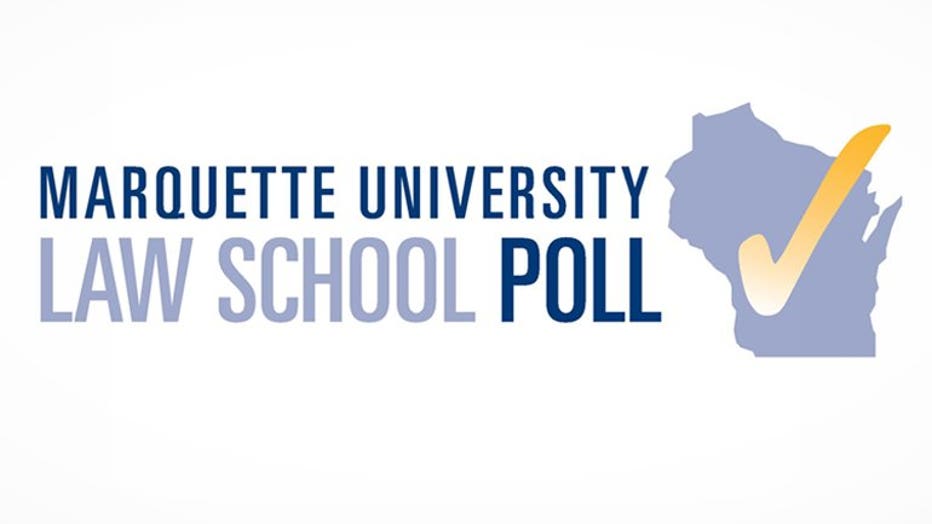
The entire questionnaire, methodology statement, full results and breakdowns by demographic groups are available at law.marquette.edu/poll.

